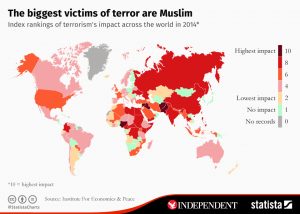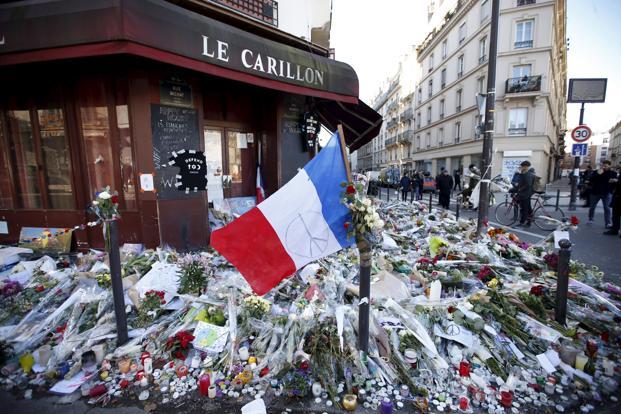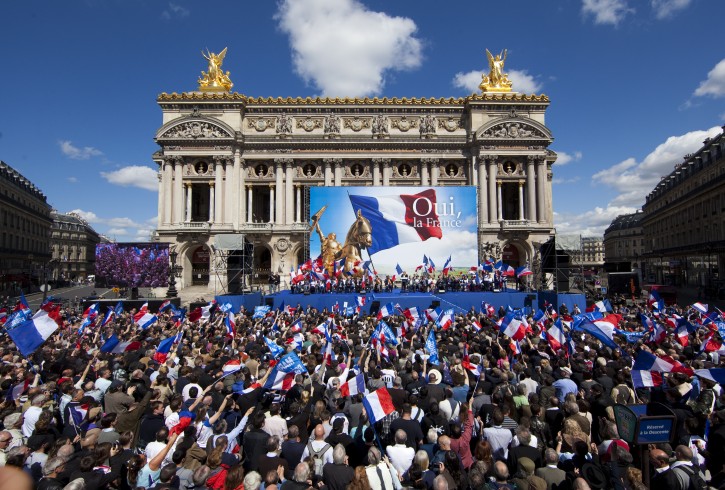By Rory Hibbler
This article originally appeared in GPR’s Spring 2016 magazine. GPR chose to repost it in light of the recent airport attack in Istanbul, and the attack on Pulse nightclub in Orlando.
Every act of terrorism in a developed, Western society seems to shake the world to its core. The attacks of September 11 were such a shock to the United States that they inspired the creation of the Department of Homeland Security, the idea of a “Global War on Terrorism”, and the revolution of how Americans approach security. Videos of Islamic terrorists beheading Western journalists after pleas of mercy have circulated their fair share of the news cycle. The recent Paris attacks of 2015 also sent mourning and grief around the globe, prompting hesitancies in the influx of migrants to Europe and tighter international action against ISIS. Meanwhile, in the same week as the Paris attacks, a bombing in Beirut killed 43 people.
Why is it that the Lebanon attack was not publicized nearly as much in the media as the Parisian attacks? Why are the events that shake the world the ones that are primarily tragic to the Western hemisphere? To answer these questions we must first ask ourselves: What is terrorism to us?
Terrorism is a tricky word to define, especially for Americans and their politicians. While the United Nations defines it as “criminal acts to provoke a state of terror,” Americans seem to have different views. Studies have shown that post-9/11 media uses the term “terrorist” mostly associated with the words “Al Qaeda”, “Islamic terrorism”, and “Middle Eastern terrorism.” Republican presidential primary candidate Donald Trump claims he can “predict” acts of terrorism, that the Syrian refugee crisis is the next source of it, and that banning Muslim immigration to the US will make America safer. Opposing primary candidate Ted Cruz went so far as to claim that Christians do not commit terrorist acts because of their principles. On the other side of the aisle, President Obama associated terrorism with “extremely poor societies” stricken with conflict. Twenty-six percent of Americans have reported having an unfavorable view of Muslims in America, leading to a slippery association between terrorism and Islam.
Statistically, are these definitions true to what a terrorist looks like? Not exactly. The FBI reports that between 1980 and 2005 Muslims committed only 6 percent of domestic terrorist attacks, and only ”2 percent” of terrorist attacks in Europe. Jewish extremists committed more terrorist attacks than Muslims.
Yet 51 percent of Americans believe racial and ethnic profiling when trying to prevent terrorist attacks is acceptable. 49 percent of Americans are “very worried” about being the victim of a terrorist attack in the United States, and 84 percent believe ISIS to be a “critical threat” to the country. In reality, the average American is more likely to be killed by a couch or toddler than by a Muslim. You are 35,000 times more likely to die from cardiac arrest than from any sort of terrorist attack.

However, terrorism is a major security issue to other parts of the world. In 2013 more than 80 percent of all terrorist attacks in the world occurred in just five countries: Iraq, Afghanistan, Pakistan, Nigeria, and Syria. In that same year, out of the 16,000 deaths due to terrorism, only 21 were American citizens- overseas and on US soil. While incidents like 9/11 and the Paris attacks do happen, white, Christian citizens of the Western world are not the ones that should be worrying over terrorist attacks. In 2011 the US National Counter-Terrorism Center reported that, globally, religious terrorist attacks claim an 81-97 percent Muslim victim rate. In 2014 there were over 125 hate crime incidents against people of Islamic faith within the US.
The Planned Parenthood shooting in Colorado Springs was an act of extremism meant to induce fear. It was carried out by a white male, Robert Dear. Men are responsible for 98 percent of mass killings in the United States. US Senator Sherrod Brown stated in November that “generally white males” are the ones that commit domestic terrorist attacks. The media generally referred to Dear as a “shooter” or “attacker.” He has been described as a social recluse. The New York Times labeled him a “violent loner.” Mike Huckabee did charge him as a “domestic terrorist,” however most politicians, including President Obama, avoided that word when describing this tragic event. In fact, it is quite difficult to find any source besides extremely left-wing media labeling him as a terrorist.
In contrast, the San Bernardino shooters were Syed Farook and his wife, Tashfeen Malik; they killed 14 people at a Christmas party in California. Beforehand, Farook had gotten into an argument with a coworker about Islam. The shooters were Muslims and had recently traveled to Saudi Arabia. The FBI immediately investigated this as a terrorist attack. President Obama’s initial statement called it a terrorist-related activity. The Los Angeles Times jumped to label it a terror attack; another shooting on US soil, by a US citizen, meant to induce fear and carry out an extremist ideal. Only this time, society labelled it as terrorism.
The media and terrorists have an unacknowledged symbiotic relationship. The media gives terrorists, particularly ISIS and other Muslim extremist groups, attention and legitimacy for their actions while catching the public eye with morbid tales. This feeds into the primary goal of terrorism, which is to gain publicity and spread fear. Al Qaeda formerly attempted to send messages to fellow members around the world to TV station al-Jazeera. News sources get sensational stories, particularly if the attacker is Muslim, a population many of the Western world already loves to hate; terrorists get the mass audience for their heinous acts.
The most appalling part of it all is that the formula for a great news story is foreign, Islamic terrorists attacking white Americans. In light of the Paris attacks, people filtered their Facebook picture to the French flag. 9/11 is still a sobering memory, 15 years later. These sorts of events happen so frequently in developing countries without so much as a media blurb. In February there was a car bombing in Ankara, Turkey killing 28; even though it was officially considered an act of terrorism, it was already back of the news cycle a few days later. Later that month a bombing in Syria took 130 lives. If that had happened in America the news would cover it for weeks on end, but those in Syria seemed to be quickly forgotten in the international realm.
Politicians on both sides of the aisle use terms like “terrorist cells” and “Islamic extremism” as a fear-mongering statement, promising that in exchange for our vote they will keep us safe. The media uses it to sensationalize viewers for higher ratings. Terrorism, while it is one of the least likely ways for someone in the Western world to die, is still a grave global security concern of the modern era. Currently the word “terrorism” is a loose social construct, used by politicians, the media, and violent extremists to further their interests. These semantics are important. We need to define it properly in order to prevent it without generalizing or profiling, which will just continue the cycle of hatred. If we continue our bellicose ways we will spur a cycle of terrorism with our own closed-minded extremism.


